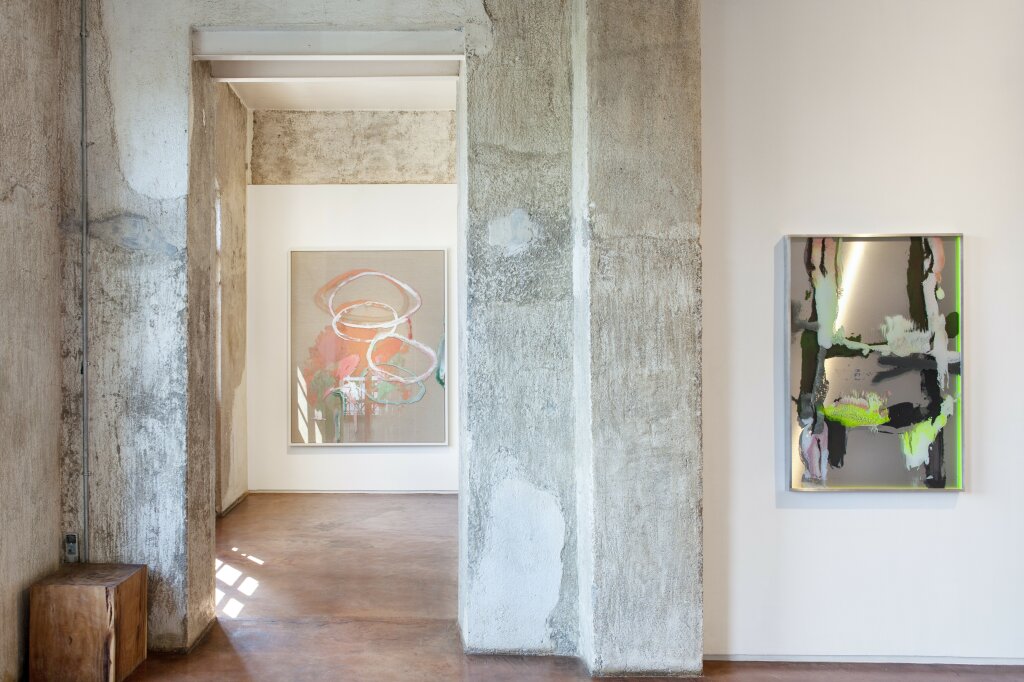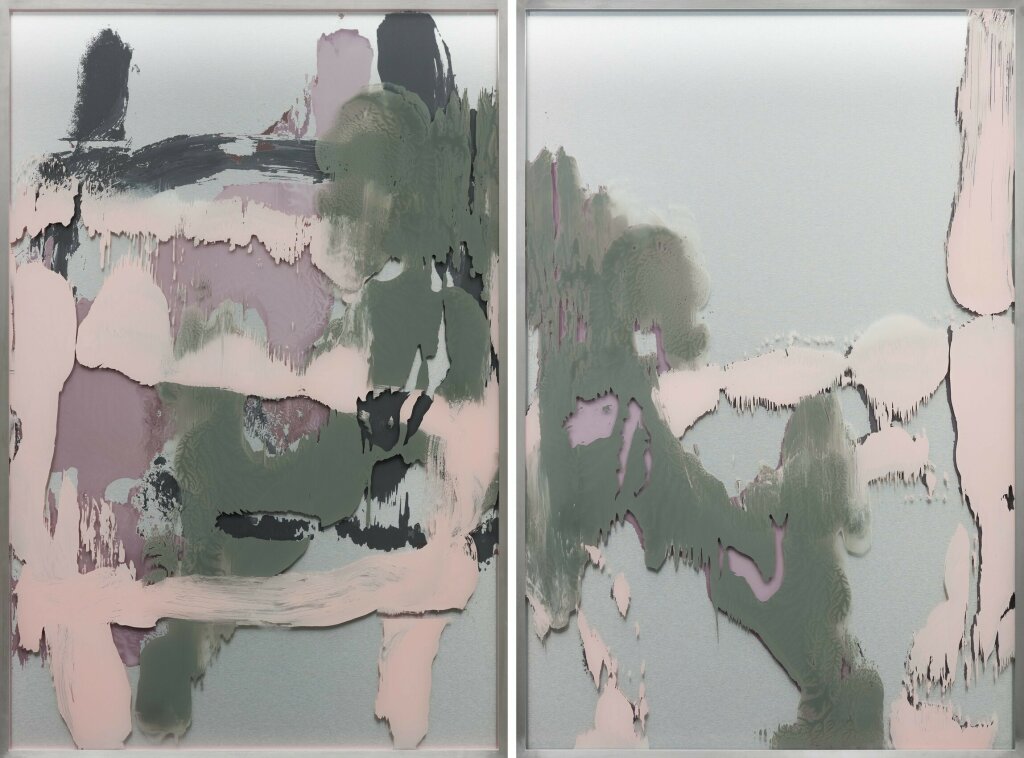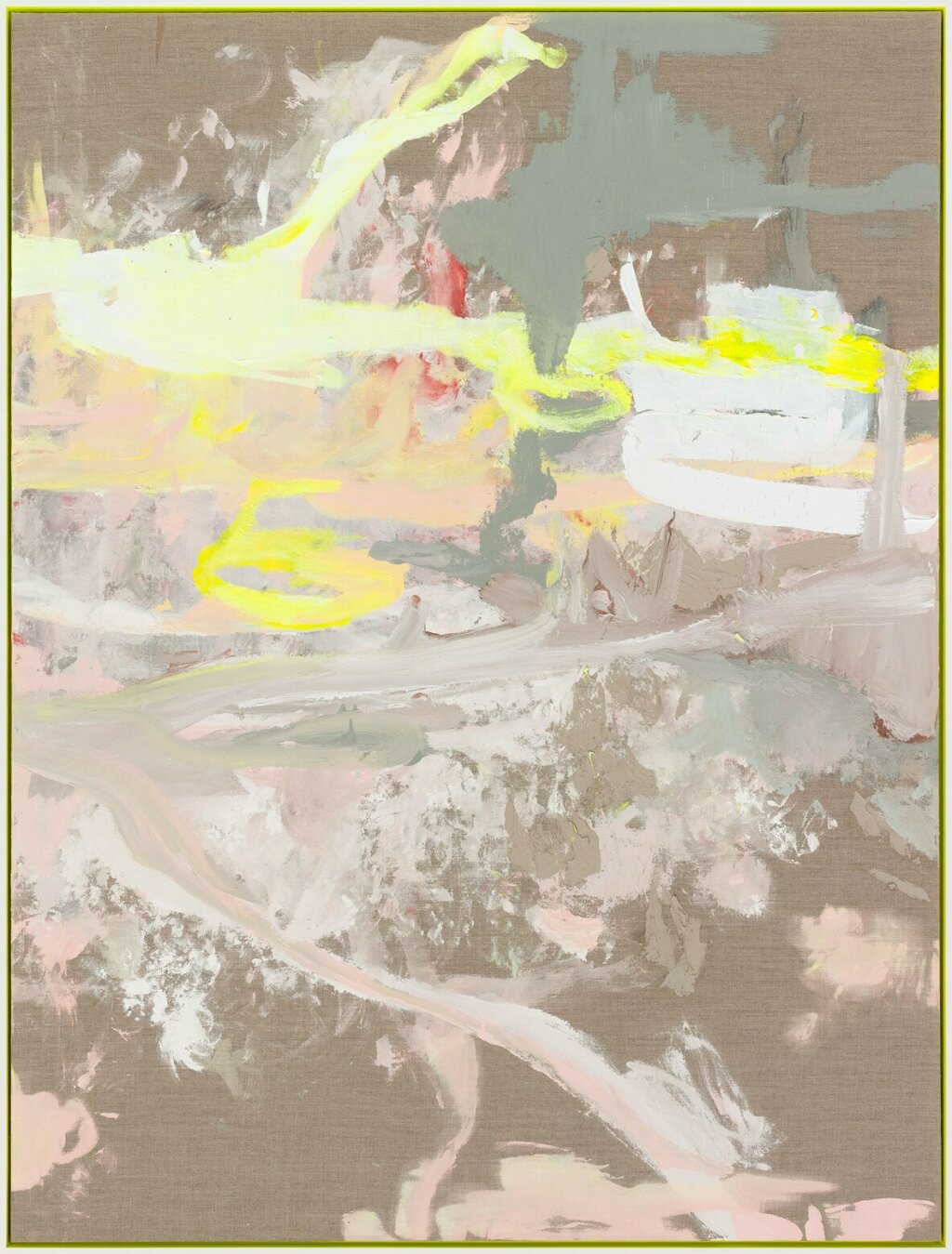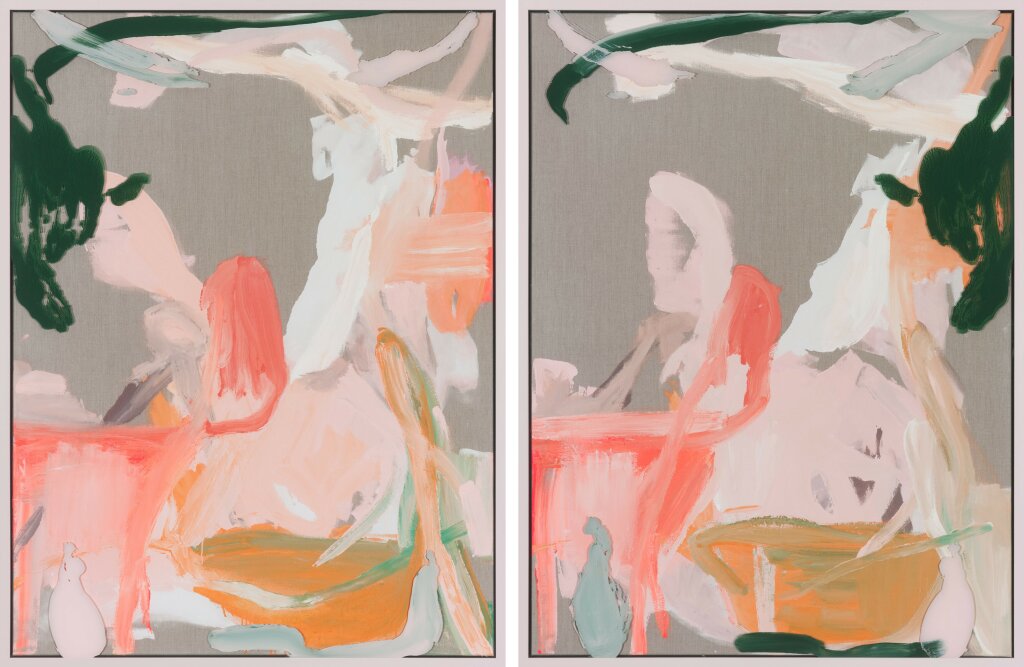Thinking Hand
Solo Exhibition at Jhaveri Contemporary, Mumbai
10 November – 30 December 2022
Thinking Hand
The third solo show with Jhaveri Contemporary focuses on painting. Painted on linen canvas, glass and aluminium, the gestural paintings are conceptually led and explore the intellectual systems—scientific, linguistic, and numerical—that structure our understanding of the world.
The series Verschränkte Werke [Entangled Works] looks to quantum physics. In quantum physics, the term quantum entanglement describes the phenomenon, which is not compatible with the means of classical physics, that the state of two interacting atomic particles, such as photons, depends on the other without the possibility of a detectable interaction or causality. Once entangled, the particles continue to respond simultaneously to the measurement of their partner, even when the partner is spatially too far away to transmit the signal at the speed of light, the highest cosmic velocity.
In this series, the analogy of entangled particles is used to describe the relationship between the two sides of a diptych: elements applied to one painting during the painting process simultaneously inform the painting process of the other painting. The original elements recur—partly in the same form, partly altered, alienated, in a different place, mirrored, in a different colour or only fragmentarily. Thus, in Schleifensprung [Loop Jump] (2020), the gestural colour applications of the canvas and glass panel of one painting are intertwined with the other, each found in different proportions, overlays, and colour shades on the other. The Verschränkte Werke series shows that the level of autonomy in abstract painting is overestimated and that there are innumerable—at least for the viewer—unknown influences, limitations, and preconditions that subtly restrict and influence an artist’s choices, not to mention the laws of physics, such as gravity and its effects on painting, which are beyond the painter’s control and influence the behaviour of the colours on the carrier material.
The same applies to the two works Wanderung von Grau [Walk from Grey] (2021) and Inside out (2022) from the series Digitale Schatten [Digital Shadows]. The paintings are both painted on the reverse of the frame’s glass, hence arranging two parallel pictorial planes one behind the other, which complement, but also disturb and counteract each other. The pictorial motifs are self-referential and echo earlier paintings of which details have been photographed, digitally edited and manipulated on the computer.
In this way, a connectedness of supposedly independent images is exposed, which points to the fact that even in the painting process there is no point from which the artist creates genuinely new things. Inside out, for instance, also forms the basis for two other works in an incessant cycle of accumulation and continuation.
This image circuit is equally a reference to the visual traffic we encounter every day in overwhelming abundance, whether on the Internet, social media, or on the streets as advertisements compete for the viewer’s attention: an escape from this flood of pictures never seems possible; new images are always derived from existing images, which stage themselves as new, but are actually a repetition of the same thing over and over.
Mata Pita (2022) and Der Verlust der Geschwister [Loss of the siblings] (2020) address the theme of simultaneous connection and separation. Mata Pita is composed of a series of large, separate canvases set in a divided angled frame. In the title, the work references familial structures: Mata (mother) and Pita (father), two individuals connected in their parenthood and procreation of an offspring. These bonds and kinship ties, however, are something that can be volatile. Relationships can change, be negated or lost as pointed to in Der Verlust der Geschwister, a single painting.
Benares (2019), on the other hand, takes an entirely different approach. Benares, another name for the city of Varanasi in India, refers to the artist’s Indian origins, his grandmother being from India: by recalling the colours and stylistic idiom of the city in the state of Uttar Pradesh, the artist intertwines this work with a geographical location in a very unique way.














